“How do you think the apocalypse will happen? Do you predict a nuclear war? Or an alien invasion, extreme fire, WW3, global warming, flooding, etc.”
–from a recent web chat quoted in the Wall Street Journal on the supposed ending of the planet this Friday
Many of us will still be sleeping Friday morning when the sun moves directly over the Tropic of Capricorn at precisely 5:12 AM in San Antonio. We’ll experience the official start of winter. It will be the longest night and shortest day of the year, and 2% of Americans will expect it to be their last. The end of the world.
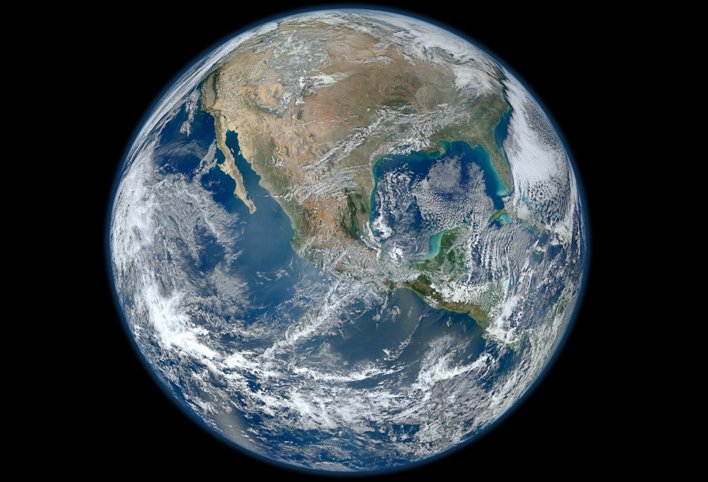
Will the world end Friday? Nope. Photo via NASA
Millions of survivalists, doomsday believers and new age spiritualists are buying into the false notion that the world ends this Friday. A false reading of the Mayan calendar largely accounts for the madness. The calendar ends a cycle this year, but will flip to a new cycle, “like an odometer,” according to a video released by NASA.
Scientists have contested the silly notion with facts, data and mathematical formulas, but like the prevailing disregard of science on the subject of climate change, millions of people are convinced that this Friday, December 21, the 2012 Winter Solstice, will be our last. Sellers of survival gear, “doomsday pods” and apocalypse kits are whistling cha-ching all the way to the bank.
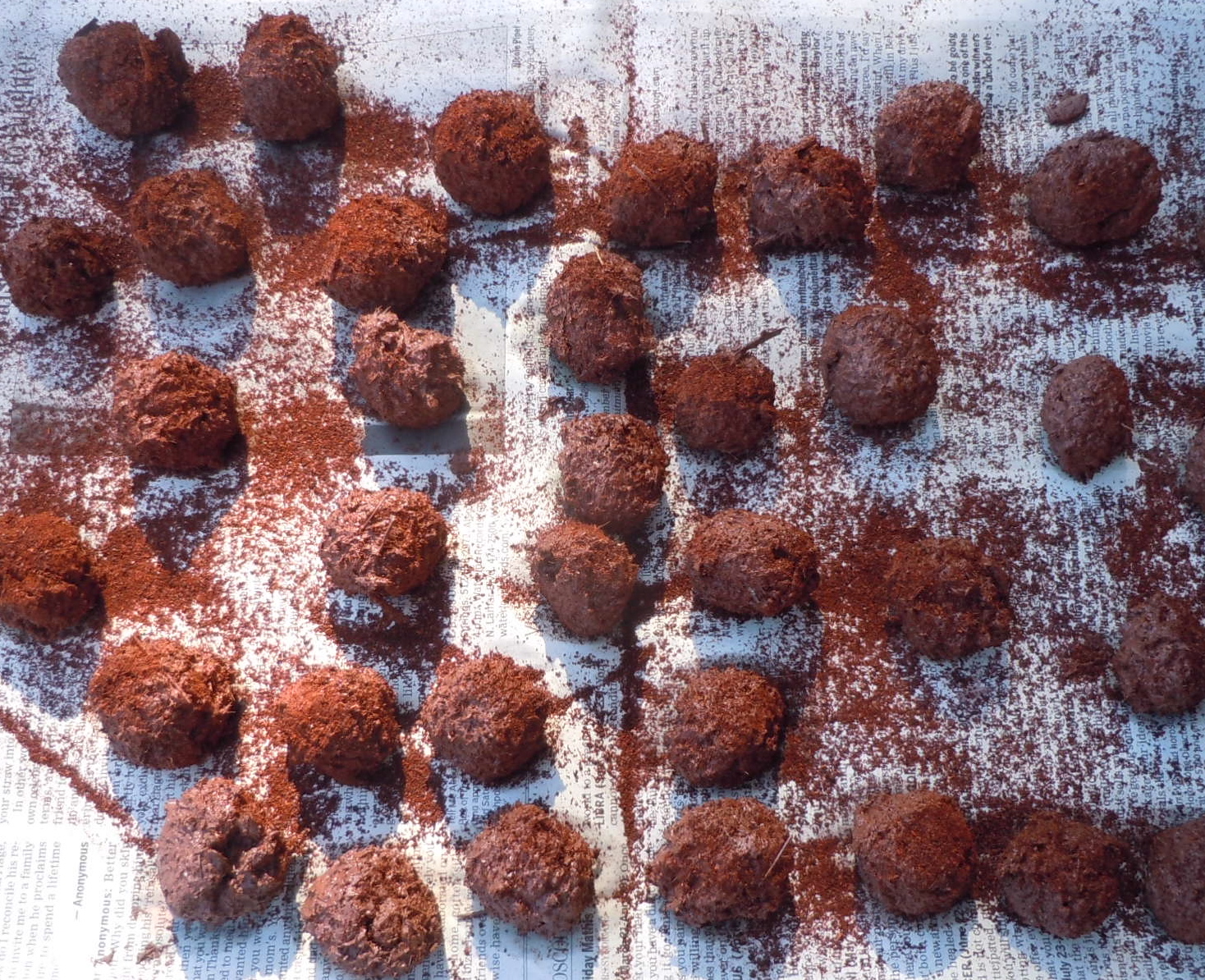
Let there be seedballs! Skip the Apocalypse talk and help make next year’s wildflowers happen by making seedballs. Photo by Monika Maeckle
We choose to celebrate the arrival of winter with an annual rite of making seedballs. Some folks bake Christmas cookies. Others craft tamales. We like to mix soil, clay, water and seed with a generous dash of chile pepper to make seedballs, a facilitator of wildflowers, the nectar sources and hosts for next year’s butterflies.
What are seedballs?
Introduced in the 70s, seedballs are a form of “guerilla gardening” whereby seeds, soil and clay are mixed together into tidy germination bombs that are said to have an 80% higher success rate than simply broadcasting seeds onto soil. Adding red potters’ clay to the mix protects the seeds from being blown away by wind and a dash of chile pepper makes the seeds less tasty to insects and birds.

Collect seeds now for seedballs. Photo by Monika Maeckle
Generally, seedballs don’t require watering and you should NOT bury or plant them. Simply toss them in a vacant lot, your front yard, or a wildscape situation like a ranch or roadside. Wait for rain to melt away the clay casing, and nature will do the rest.
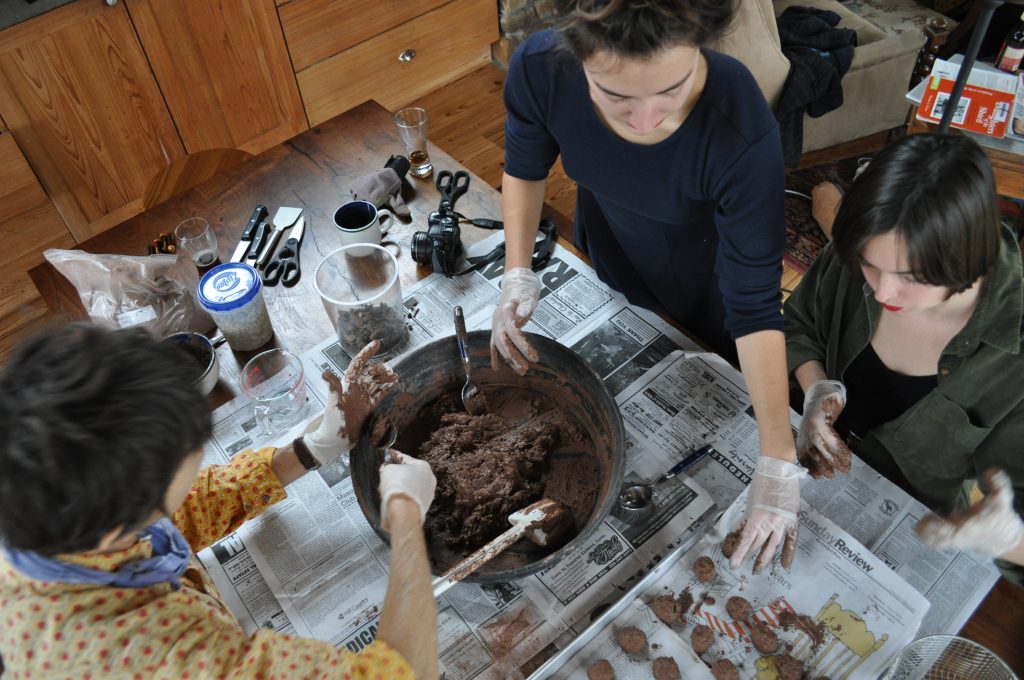
Skip the Apocalypse party and have a seedball gathering instead. Photo by Hugh Daschbach
Seedball recipes vary as much as those for Christmas cookies. Some seedball aficionados recommend a 3:2:1 ratio of soil, clay and seed, adding nutrient rich ingredients like worm casings or other natural fortifiers. The Lady Bird Johnson Wildflower Center encourages a concoction that includes sifting, humus with good bacteria intact, your local soil, and

What do you need to make seedballs? Seeds, soil, clay and water–and chile powder. Photo by Monika Maeckle
sand. I’ve had great success using three parts local or potting soil, one-two parts red potter’s clay powder (purchased from a pottery supply) and one part seeds. The clay binds the ingredients and keeps the balls intact. Add water until you get a workable dough that allows you to roll a spoonful of seedball mix into a ball that doesn’t stick. If you find that your seedball dough is too watery, just wait. The soil soaks up the excess liquid with time.

Soil, seeds, red clay, water–and chili pepper. Mix until you get a consistency that is easily formed into seedballs. Photo by Monika Maeckle
Put them on newspaper to set up and then add my secret ingredient: red chile pepper. The pepper discourages insects, birds and other critters from denigrating or eating the seeds, giving them a better chance at germinating and becoming wildflowers for pollinators.
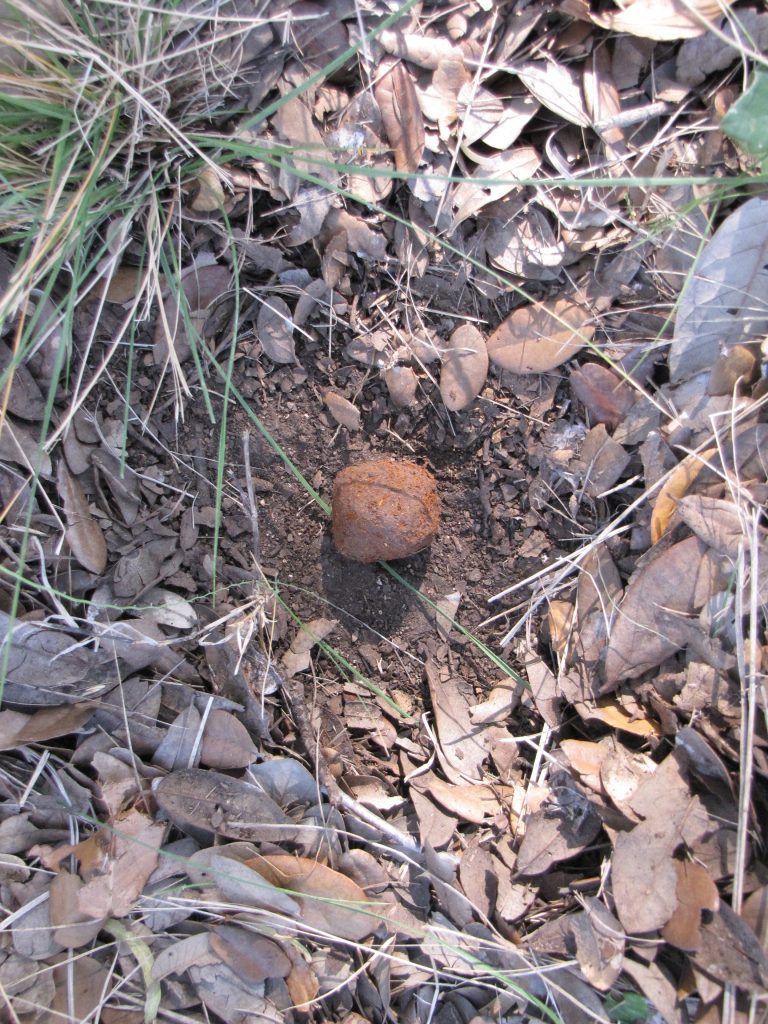
Seedball properly tossed. Throw them wherey they won’t compete with grass. Make sure it has contact with soil. Photo by Monika Maeckle
Once the seedballs set up, usually after 24 hours, store them in paper bags for later use or toss them right away.
When you toss them, make sure they land where they can make contact with soil, as in the photo above. If the seedballs have to compete directly with grass, leaves or forbs, germination rates of the seeds decrease.
Remember to use only native seeds for wildscaping situations. Good luck and let us know how it goes.
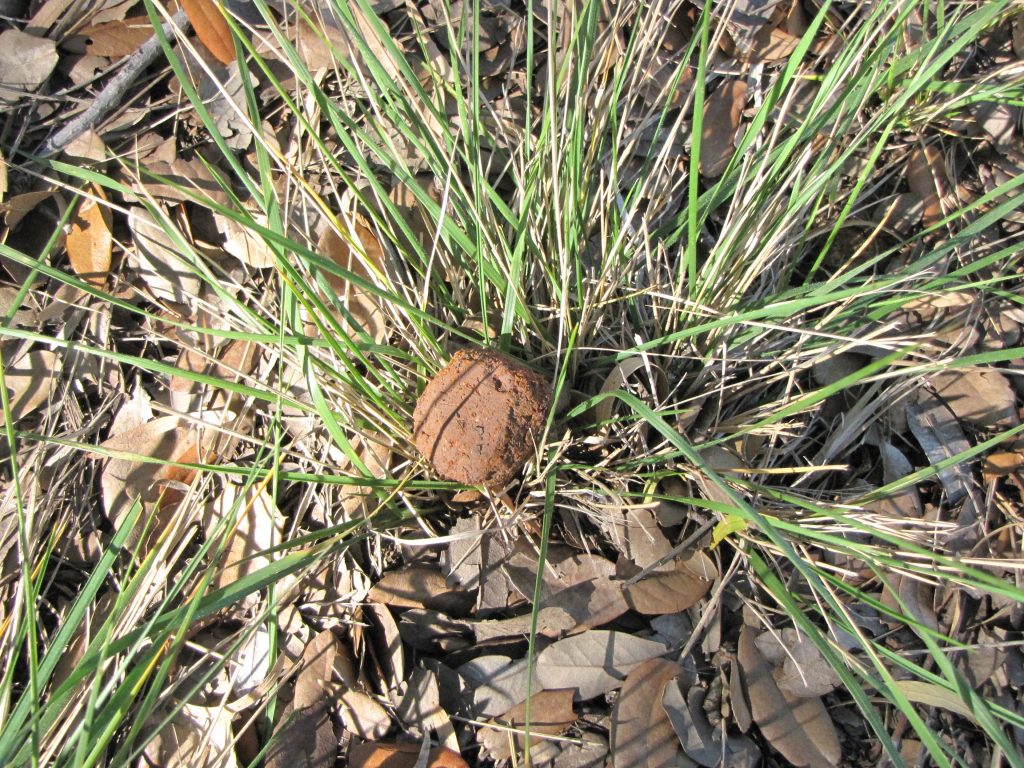
Seedball improperly tossed. Make sure it makes contact with soil. Photo by Monika Maeckle
Texas Butterfly Ranch Seedball Recipe
- 3 parts local soil or potting soil
- 1 – 2 parts red potter’s clay powder, also known as “terracotta powder” at pottery supply stores
- 1 part native wildflower seeds
- Water, as needed.
- Newspaper and cookie sheets for drying seedballs
- Stainless steal bowls or pots for mixing

I live in Lincoln County, Missouri. For the last 3 years I have seen less Monarchs. This year I only saw 1 caterpillar on my dark red milkweeds along my driveway and then it disappeared.
I am going to order milkweed seed to supplement my giant milkweed and red milkweed. I live in the middle of the woods and want to plant the milkweed along the road under the power lines. I have an agreement with the electric cooperative that I will cut any trees trying to grow there if they leave my milkweeds, sunflowers, Queen Anne Lace and other wildflowers alone and do not cut them.
Bravo, Dorlis!
MM